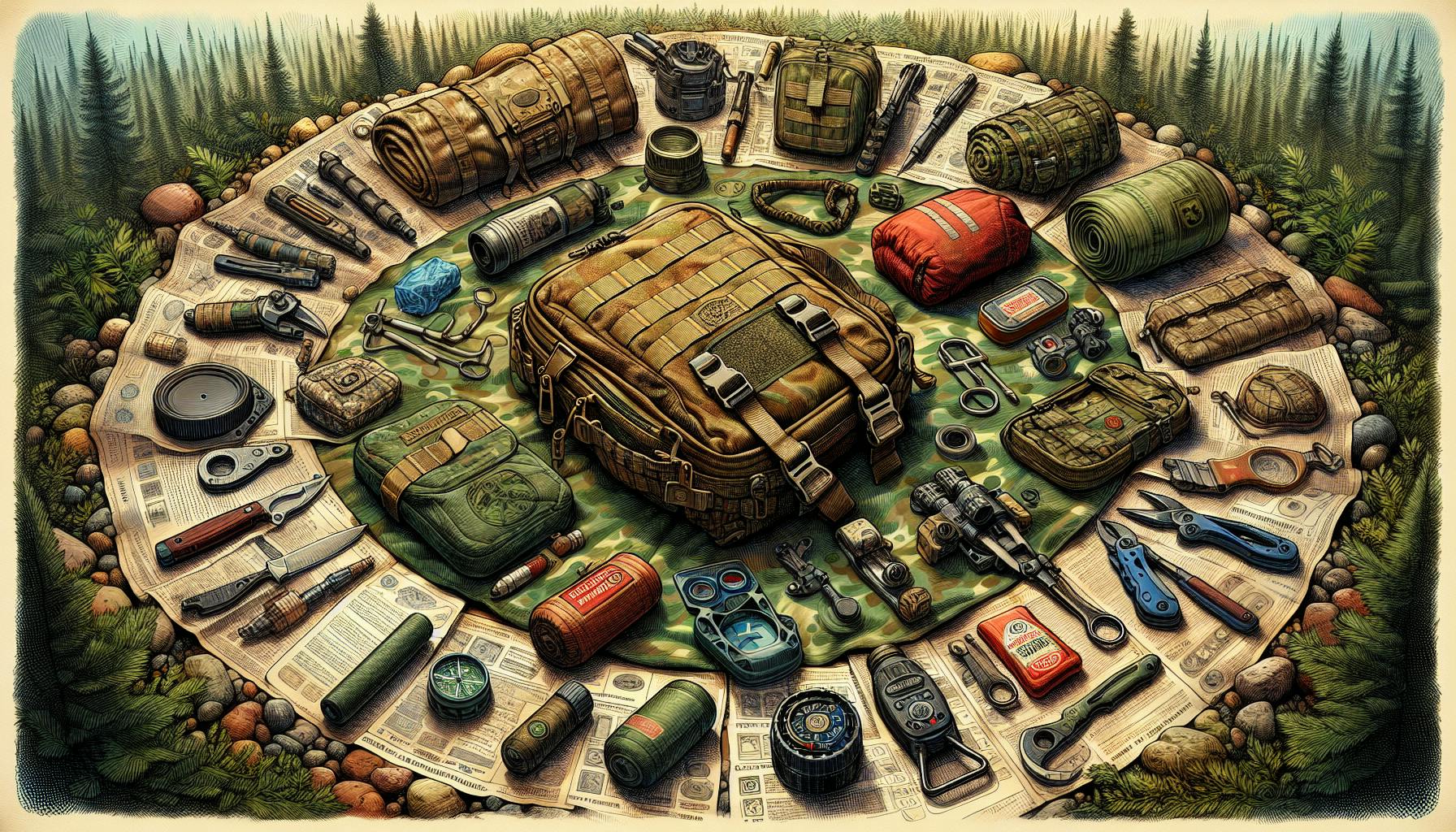Introduction to the Great Depression
The Great Depression was the most catastrophic economic crisis of the 20th century. Lasting from 1929 to 1939, it led to unprecedented levels of unemployment, homelessness, hunger, and desperation across America and the world. Understanding the causes and impacts of this monumental event provides critical historical context that can inform economic preparedness and survival strategies today.
While the Great Depression may seem like a distant historical event, drawing parallels to potential modern economic disasters is key. The economic vulnerabilities and social upheaval seen in the 1930s could emerge again during any future financial collapse. By studying the Great Depression, individuals and communities can gain perspective on prudent financial preparations, emergency supplies, urban homesteading tactics, and survival readiness for weathering economic storms.
Just as those living through the Great Depression could not fathom the economic devastation that would unfold, we cannot predict what the future may hold. While hopes remain that another depression may be avoided, preparing for potential economic disasters or collapses null is always wise. The Great Depression provides a vital case study in societal and individual survival.
Defining the Great Depression
The Great Depression began with the crash of the U.S. stock market in October 1929. Global GDP ultimately fell by 15% between 1929 and 1932 while America’s GDP contracted by nearly 50%. Unemployment in the U.S. soared to 25% by 1933 and even those with jobs saw wages drop drastically. Across the country, people lost their life savings as thousands of banks collapsed. The impacts spread worldwide, null leading to decreased international trade, rampant unemployment, and the unraveling of the global economy.
For over a decade, much of the world experienced pervasive poverty, hunger, homelessness, unemployment, health crises, farmers losing their livelihoods, and widespread desperation unknown today. The Great Depression marked an unprecedented economic catastrophe that reshaped nations.
What Caused the Great Depression?
Economists continue debating the complex combination of factors that spurred the Great Depression. Key causes included:
-
Stock Market Crash - During the 1920s, speculation and inflated stock values set the stage for the crash. On October 29, 1929, the stock market lost 13% in two days, triggering massive panic selling. Billions of dollars were lost in the stock market crash.
-
Bank Failures - Over 9,000 banks failed by 1933 as people rushed to withdraw deposits. With no deposit insurance, the collapsing banks wiped out many people's life savings.
-
Contractionary Monetary Policy - The Federal Reserve decreased money supply after the crash, causing deflation and putting further downward pressure on prices and economic activity.
-
Weak Agriculture Sector - Farmers were already struggling with overproduction and falling prices when the Great Depression hit, causing farm income to drop by over 50%.
-
Wealth Disparity - The disparity between rich and poor reached a peak in 1929, with the top 1% owning 40% of the nation’s wealth. This weakened purchasing power and left the economy vulnerable.
-
Global Economic Connections - World economies were closely tied together, allowing the downturn to spread quickly worldwide through trade relations and interconnected financial systems.
The Great Depression Timeline
-
October 1929 - “Black Tuesday”, the Wall Street stock market crash in New York City, marked the start of the Great Depression.
-
1930-1933 - As consumer spending declined, unemployment reached 25%, exports fell by 60%, and GDP dropped 30%. 37,000 businesses failed in 1930 alone.
-
1931 - A massive wave of 2,300 bank failures wiped out over $140 billion in deposits as people rushed to withdraw savings.
-
1932 - Farm income in America dropped to almost half of 1929 levels, devastating rural communities already impacted by falling crop prices and overproduction.
-
1933 - Unemployment in the U.S. hit its peak of 25% while unemployment for African Americans soared to over 50%. Over 1,000 home loans were foreclosed every day.
-
1935 - President Roosevelt introduced his New Deal policies and programs to provide jobs and stimulate economic recovery through public works projects and financial reforms.
-
1939 - World War II military production started rejuvenating the economy, effectively ending the Great Depression.
Effects and Outcomes of the Great Depression
The impacts of the Great Depression were devastating and touched every area of life. Understanding these economic, social, and political effects provides lessons in fortifying local communities and enhancing preparedness for potential future disasters.
Economic Effects
-
America’s GDP shrank by 50% and global GDP fell approximately 15%.
-
Industrial production declined 47%. Corporate profits plunged from $10 billion in 1929 to -$2 billion in 1932.
-
Prices for crops plummeted. Wheat dropped from $1.51 to $0.67 per bushel. Corn fell from $0.80 to $0.32 per bushel.
-
Investment bottomed out as people hoarded cash. The number of new capital issues fell by 98%.
-
International trade decreased by 65% as other countries enacted protectionist tariffs and global demand plunged.
-
Unemployment rose from 3% in 1929 to 25% in 1933. In some cities, unemployment exceeded 50%. Unemployment remained in double digits for the entire decade.
Social Effects
-
Homelessness increased dramatically with “Hoovervilles” (named after President Hoover) of impoverished people living in shanty towns springing up across the country.
-
Hunger and malnutrition became rampant. 30% of the population was undernourished, leading to health issues. Food riots erupted in some areas.
-
The suicide rate climbed to an all-time high of 17 suicides per 100,000 people in 1932, likely tied to losing life savings and jobs.
-
Crime rates increased 24% between 1929-1933 as desperation, disenfranchisement, and poverty grew. Instances of stealing food and money rose.
-
Public morale, confidence, and optimism plummeted. Feelings of cynicism, distrust, and anger towards institutions prevailed.
-
Political extremist movements emerged in response to austerity, communism fears, and wealth inequality.
Long-Term Changes
-
FDR’s New Deal established new government agencies (FDIC, SEC, Social Security Administration) and regulations that still exist today. This transformation expanded the federal government’s role vastly.
-
Banking reforms like the Glass-Steagall Act introduced deposit insurance and securities regulation to rebuild trust in financial institutions.
-
Keynesian economic theories supporting government spending and monetary interventions became prominent and shaped policy for decades.
-
Trade policy shifted dramatically to favor protectionism and economic nationalism. The Smoot-Hawley Act raised tariffs on thousands of imports.
-
Labor reforms like minimum wage and child labor laws passed as part of the New Deal remain integral today. The right of unions to organize and bargain collectively was strengthened.
-
Income taxes increased significantly with top marginal tax rates rising from 25% in 1931 to 63% in 1932 and 79% in 1936 to increase government revenue.
In conclusion, the Great Depression proved that even an affluent, modern nation was vulnerable to economic catastrophe. Its legacy underscores the importance of individual and community preparedness null to weather potential future economic disasters or collapse. Studying the history offers vital lessons in survival readiness and emergency response. Just as our ancestors emerged resiliently from their darkest days, we too can become empowered by knowledge and readiness. With preparation, resourcefulness and strong local support systems, any storm can be weathered.


